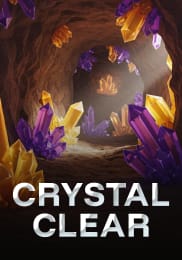The 3 Welsh Mutations
Welsh Lesson
Video transcript
Hey there and welcome to Ablas! In Welsh, a word can often change spelling based on the word that comes before it, or because of the role it plays in the sentence. These changes are called mutations, and we’ll cover the 3 types in this video, putting it all into practice with a short story and quiz at the end. Be sure to download the PDF of today’s lesson from the link in the description!
The soft mutation
So let’s dive right in and start with the soft mutation.
Here are all the possible changes that can happen with the soft mutation. Don’t worry if you can’t remember all of them to begin with; once we look at some examples, you’ll get the hang of it.
The radical form is the original letter, so for example, if a word starts with the letter B, it’ll change to F with the soft mutation. There’s a special case where the letter G disappears with this mutation.
Radical form | Soft mutation |
b | f |
c | g |
d | dd |
g | – |
ll | l |
m | f |
p | b |
rh | r |
t | d |
So when does the soft mutation occur?
It’s needed on a word that follows y, and yr (meaning “the”), and un (meaning “one”). For example, the word for “boy” is masculine, so it wouldn’t need the mutation: “y bachgen”, but the word for “girl” is feminine, so we’d need to say: ”y ferch”. Note that this isn’t the case for words starting with ’ll’ or ‘rh’.
We also need the soft mutation after the word for “two”: dau for masculine words, dwy for feminine words. For example: dwy dref.
Adjectives following a feminine noun also require the soft mutation. For example, y bachgen bach - this is correct because bachgen is masculine. But if we had a feminine noun like ferch, we’d need to change the first letter like this: y ferch fach.
Adjectives that come after yn also need this mutation. Here’s an example: Mae’r dref yn brydferth. Notice that the first letter has changed from P to B.
It's also needed on the word that follows the question Pa? (meaning Which? or What?). Pa faint? “What size?”
We’ll also need the soft mutation after these prepositions: am, ar, at, dan, dros, drwy, gan, heb, hyd, i, o, wrth. For example, ar taith becomes ar daith.
And lastly, the soft mutation is needed after dy, which is the singular informal you, and ei, meaning “his”. Let’s look at a couple of examples. dy gartref, (“your home”). ei lyfr, (“his book”).
The nasal mutation
Now let’s cover the nasal mutation.
Here are all the letters that change with the nasal mutation. And luckily, there are only two cases that trigger this mutation!
Radical form | Nasal mutation |
b | m |
c | ngh |
d | n |
g | ng |
p | mh |
t | nh |
We need it when using yn with a place. But be careful, the word yn also changes spelling if it’s followed by a word starting with M or NG. Let’s see a few examples: Yn Nolgellau. Ym Mhorthmadog. Yng Nghaerdydd.
The nasal mutation is also needed after fy, which means “my”. For example: fy cath becomes fy nghath.
The aspirate mutation
Let’s cover the final mutation: the aspirate mutation.
This is probably the easiest one to remember as there are only 3 letters that trigger the mutation. And like the nasal mutation, the aspirate mutation is only used in two cases.
Radical form | Aspirate mutation |
c | ch |
p | ph |
t | th |
We need it after a, which is the Welsh word for “and”. For example: te a choffi.
We saw earlier that "ei" triggers the soft mutation if it means “his”, but it can also mean “her”, so when it does, it requires the aspirate mutation. Let’s look at an example: ei thad.
Story
Now we’ve learnt all the 3 different mutations, let’s put it all into practice with a short story.
| Mae Sioned yn mynd i Gaerdydd heddiw. | Sioned is going to Cardiff today. |
| Mae hi'n teithio ar y trên o Bontypridd. | She's traveling on the train from Pontypridd. |
| Pan mae hi'n cyrraedd Caerdydd, mae'r haul yn disgleirio. | When she arrives in Cardiff, the sun is shining. |
| Mae hi'n cerdded o'r orsaf i ganol y ddinas. | She walks from the station to the city centre. |
| Mae'r strydoedd yn brysur iawn. | The streets are very busy. |
| Mae hi'n gweld Castell Caerdydd yn y pellter. | She sees Cardiff Castle in the distance. |
| Mae'r castell yn hen ac yn brydferth. | The castle is old and beautiful. |
| Mae hi'n prynu tocyn ac yn cerdded i fyny'r bryn bach. | She buys a ticket and walks up the small hill. |
| Mae hi'n gweld y muriau cerrig hynafol. | She sees the ancient stone walls. |
| Ar ôl yr ymweliad, mae Sioned yn mynd i gaffi bach yng nghanol y ddinas. | After the visit, Sioned goes to a small café in the centre of the city. |
| Mae hi'n archebu paned o de a chacen flasus. | She orders a cup of tea and a delicious cake. |
| Mae'r bwyd yn fendigedig! | The food is wonderful! |
| Cyn mynd adref, mae hi'n siopa yn y farchnad. | Before going home, she shops in the market. |
| Mae hi'n prynu llyfrau Cymraeg a cherdyn post i'w mam. | She buys Welsh books and a postcard for her mother. |
| Mae Sioned yn hapus iawn. | Sioned is very happy. |
| Mae hi eisiau dod yn ôl i Gaerdydd eto'n fuan. | She wants to come back to Cardiff again soon. |
It’s quiz time!
Don’t worry if you missed some of the mutations in that story – you can download the PDF of today’s lesson which will include the full translation. But now it’s quiz time!
What happens to the letter 'g' in the soft mutation?
It disappears
It becomes 'ng'
It becomes 'gh'
The correct answer is… it disappears.
What does 'cath' become after 'fy'?
nghath
gath
chath
The correct answer is… nghath.
Which mutation occurs after the word 'a' (and)?
Aspirate mutation
Soft mutation
Nasal mutation
The correct answer is… the aspirate mutation.
Your task
Well done for getting this far!
Now your task is to extend the story from earlier where Sioned meets her mother back at home and tells her all about Cardiff. Try to include as many of these mutations as possible.
Radical | Soft | Nasal | Aspirate |
p | b | mh | ph |
t | d | nh | th |
c | g | ngh | ch |
b | f | m | |
d | dd | n | |
g | – | ng | |
ll | l | ||
rh | r | ||
m | f |
Be sure to leave a like if you enjoyed this lesson and hit the subscribe button so you don’t miss out on future videos. Our website is full of fun games across 7 languages, so head on over and put your skills to the test! Until next time, thanks for watching!
Thoughts on this video?







